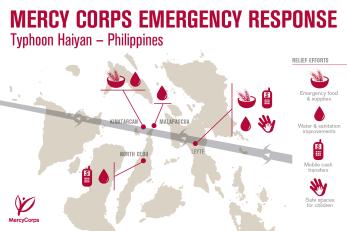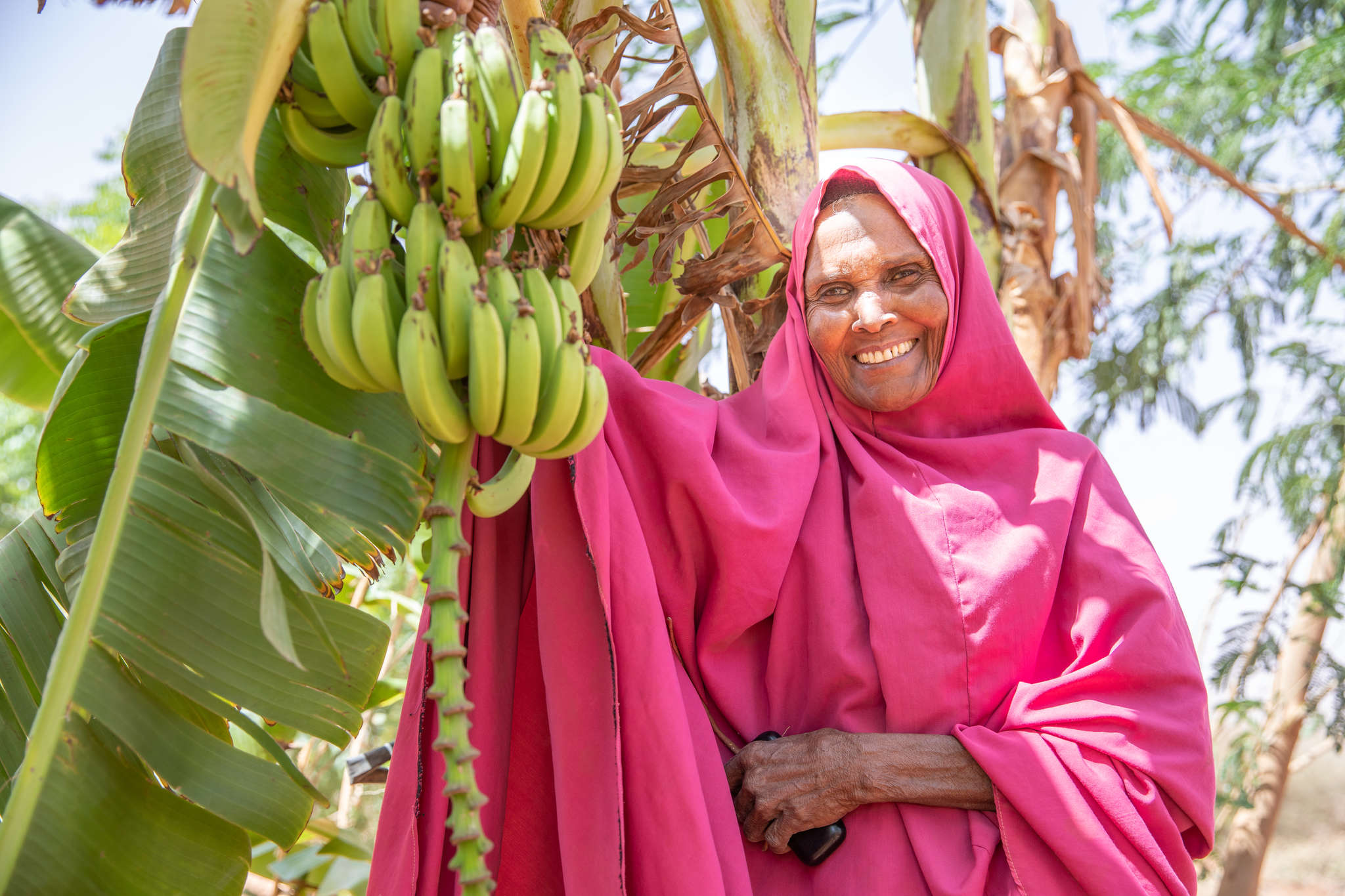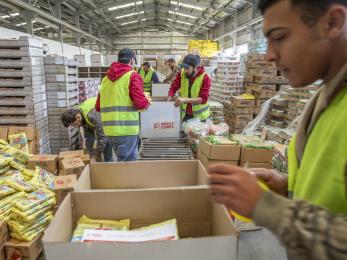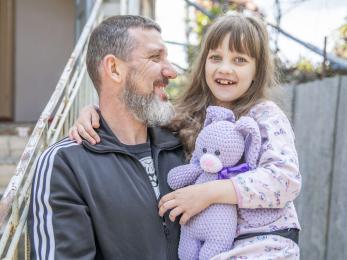One year after Typhoon Haiyan: Progress report

One year ago today, Typhoon Haiyan made landfall in the Philippines. It was one of the strongest storms ever recorded, with massive ocean waves and winds up to 195 miles an hour that shredded a million homes and displaced more than four million people.
From emergency relief to economic support, the journey from disaster to recovery is never easy. But thanks to our supporters, we were on the ground immediately after the storm providing lifesaving aid. And we've been working on four islands in the months since to support the long-term recovery of more than 125,000 people in the Philippines.
After the disaster: Emergency food & supplies
Immediately after the typhoon hit, Mercy Corps deployed an emergency response team to provide emergency assistance on the ground. Along with our partners, we provided emergency food, water and essential supplies to more than 18,000 people including:
- Hygiene kits with mosquito nets and repellant, toothbrushes and toothpaste, soap, detergent and jerry cans for water
- Kitchen kits with dishes, utensils, a frying pan, knife, kettle and bucket
- Reconstruction kits with a hammer, saw, chisel, shovel, tarp and nails
As always, we worked quickly to identify the communities most in need and had received little or no aid from other international relief efforts. This kind of rapid assessment is vital because, in the race to save lives after a disaster, decisions based on incomplete information can do more harm than good. The locally-sourced supplies helped support local economies and reached people living in some of the most remote affected areas.
After the disaster: Safe spaces for children
Staff and local volunteers helped set up safe spaces for children to play after the typhoon struck. Photo: Miguel Samper for Mercy Corps
The terrifying storm was especially traumatic for children. As part of our emergency response work, we always prioritize support for the youngest survivors. In the Philippines, that meant setting up two safe spaces with games and sports as well as one-on-one counseling to help 649 children cope with fear and grief brought on by the disaster.
Trained caregivers were there to help the children express their emotions, make friends, play and just be kids while their parents worked to rebuild the world around them.
Moving forward: Improved water & sanitation services
Access to clean water after a disaster is vital to help families stay clean and healthy as they recover. Photo: Miguel Samper for Mercy Corps
Whenever a disaster strikes, we always look for ways to move families as quickly toward recovery as possible — and for the ways we can help them make their lives and communities better than before.
In the months following Typhoon Haiyan, we began repairing and improving water and sanitation services for 5,000 people living on remote islands. We provided ceramic water filters to families to turn rainwater into free, safe drinking water, and are building repairing community wells and building toilets and hand-washing facilities in schools.
Moving forward: Mobile cash transfers
As communities began to clean up from the storm, what survivors needed most was money. We launched an emergency cash assistance program — the most efficient way of providing relief — that allowed 25,500 families to begin their own recovery process and choose what they needed most, like buying food, repairing their homes, and restarting their businesses.
Mercy Corps partnered with BanKO, a local mobile savings bank, to give each family about USD $90 in the form of an unconditional cash transfer on their mobile phones.
Watch below to see how the Go family was able to restart their candy-making business with Mercy Corps' support:
Looking ahead: Expanding financial services
In the past year we’ve reached more than 100,000 people with $2.3 million in emergency cash assistance that has helped them buy food, rebuild their homes and reopen their businesses. But as much as they needed cash, they also needed something most people in the Philippines had never had: a safe way to manage it.
An estimated 80 percent of Filipinos don’t have regular access to a bank account; for many, receiving cash transfers after the typhoon was their first banking experience.
Working with BankO, the program is continuing to bring longer-term financial services to remote, low-income communities that don’t have access to brick-and-mortar banks. Now we are testing a new small-business loan for survivors to expand or start a new enterprise.
With financial education and these mobile banking services, people in the Philippines will be able to save money in a formal institution for the first time, building their financial security and making them better prepared the next time disaster strikes.


